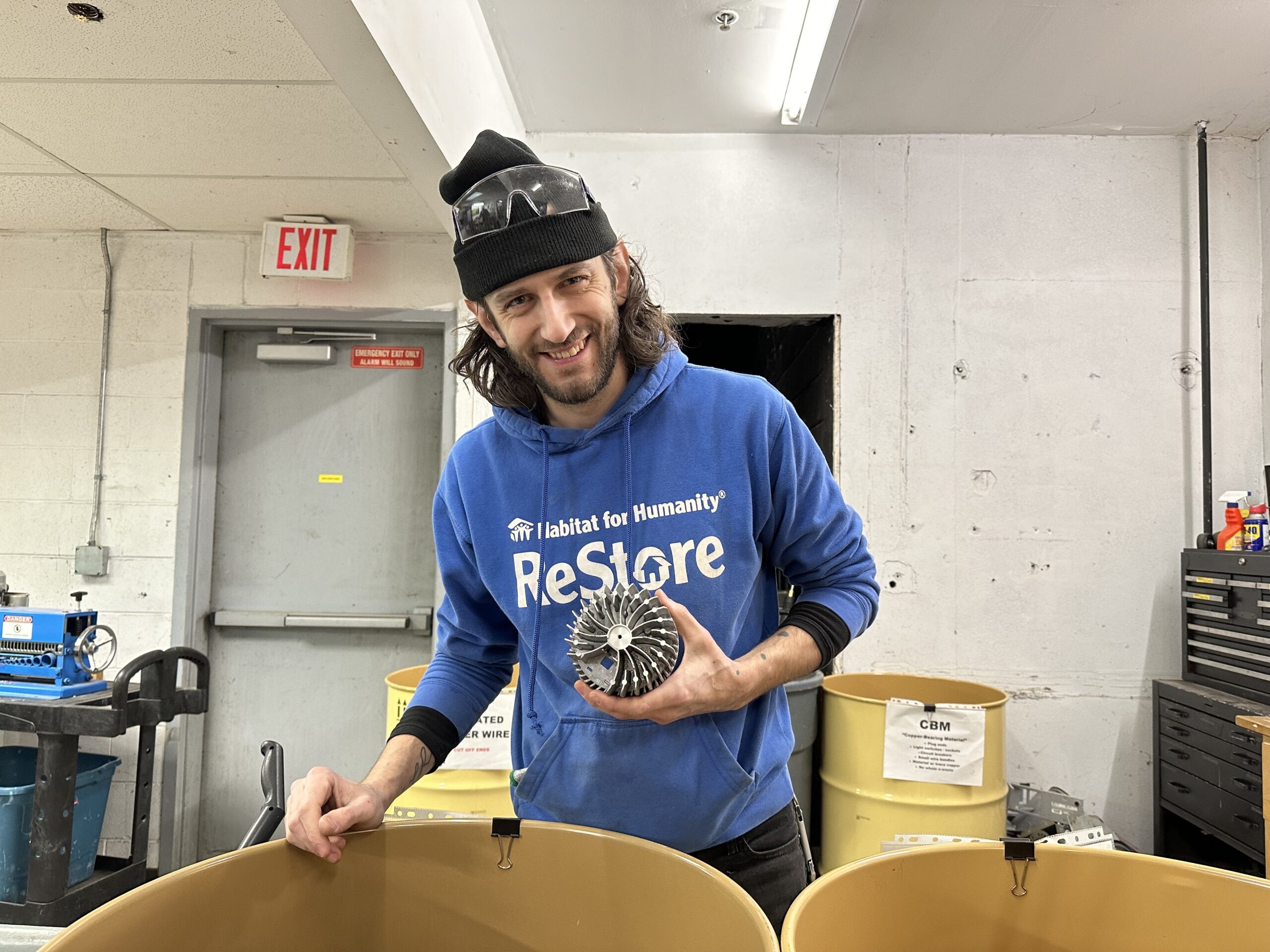
By Ian Gallagher, Construction Coordinator
Windows and doors are the places where your house will lose the most heat during the winter. Intuitively, this makes sense: they are both giant holes in the wall!
While windows can allow sunlight (on the rare sunny Portland winter day) into your house to warm the air inside, more often they are a place where heat transfer occurs. Energy transfers from warm air inside to the glass pane and then to the cooler air outside.
If your windows don’t seal properly, there might even be air movement through cracks around the window. Air can also sneak through the wall if there are any cracks between the window and the interior and exterior window trim.
You can stop this airflow and keep your home warmer and drier this winter by mastering the art of caulking!
Interior caulking
Materials/tools you will need
- Tube of latex caulk
- Caulk gun
- Utility knife
- Cloth (damp, if preferred)
Steps
- Begin by prepping your surface. Scrape and wipe away any debris from the crack you will be caulking.
- For large cracks, considering stuffing foam backer rod into the crack prior to caulking.
- Use the knife to cut the tip of the tube of caulk at a 45-degree angle. The hole should be small, about the size of the hole at the tip of a pen.
- Load the tube of caulk into the caulk gun and squeeze the trigger until the ram rod is snug against the back of the tube.
- Squeeze out thin, short sections of caulk onto cracks. Then immediately press the release button on the back of the gun to release pressure. A bit more caulk may still leak out, so always watch the tip until caulk stops flowing.
- Smooth the caulk with a finger, then wipe your finger on the cloth. You can use nitrile gloves while caulking to protect your fingers, although the gloves can make it harder to leave the caulk smooth and clean.
Note: Going slowly and keeping your fingers clean will make you go faster in the long run because you won’t end up with caulk all over your hands and the caulk gun.
- When you are finished, press the release button and pull the ram rod back to remove the tube of caulk from the gun. You can put a small nail into the tip to act as a plug, but for interior caulk, this isn’t necessary. You can just squirt a small amount of caulk out to harden on the tip, then pull this off the next time you want to caulk.
- Wait for the caulk to dry, then paint over any areas that you caulked.
Exterior caulking
- Exterior caulk is different from interior caulk. These products are typically polyurethane-based and much harder to work with, but also more water-resistant. We recommend following the same steps as above, although the hole you make in the caulk gun will have to be larger, closer to the size of a marker.
- Unlike latex interior caulk, polyurethane caulk will not easily come off of your fingers. So it is important to be careful and use as little caulk as possible. You can use mineral spirits and a rag to clean the caulk off of your hands when you are done.
- Plug the caulk with a nail when you are done.
- Once the caulk has dried, you can paint over it.
If your windows are thin or they don’t seal properly, you might consider upgrading your windows. Older houses typically have single pane windows. Nowadays, you can install double pane or even triple pane windows. The multiple panes and air pockets trapped between them work to slow down the transfer of heat from inside the home to outside.
Check the Energy Trust of Oregon to see if you are eligible for cash incentives for window upgrades. If you own your home, you may be eligible for Habitat’s home repair program.
If your home was built before 1978, window replacement could disturb lead, and it’s important to have contractors with the proper training do the work.


